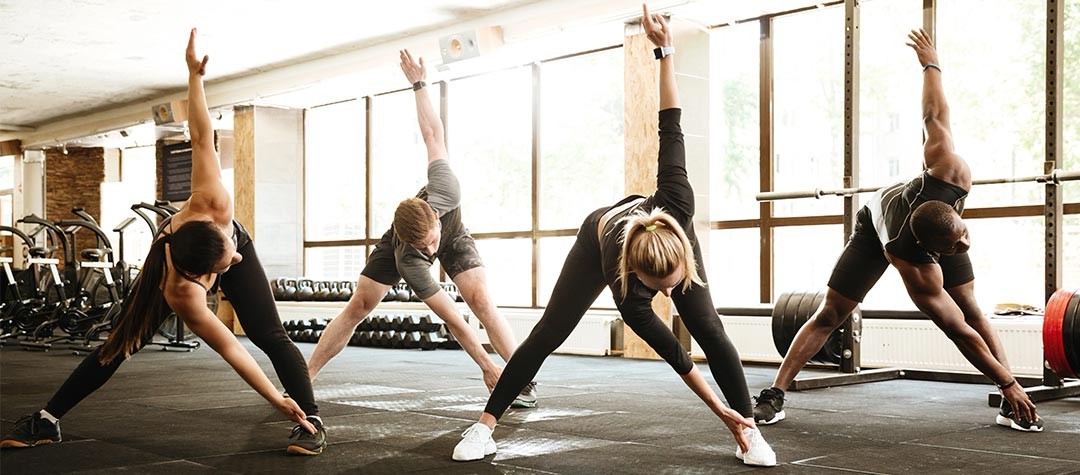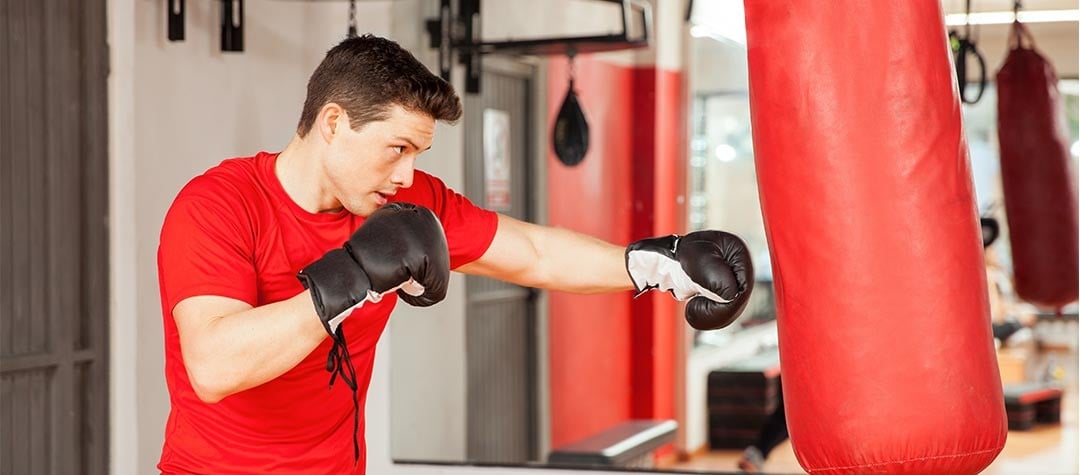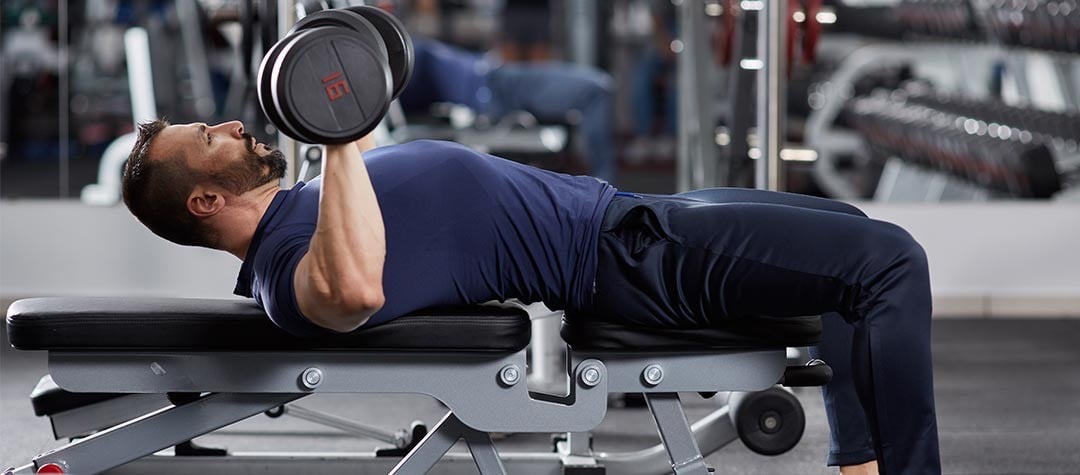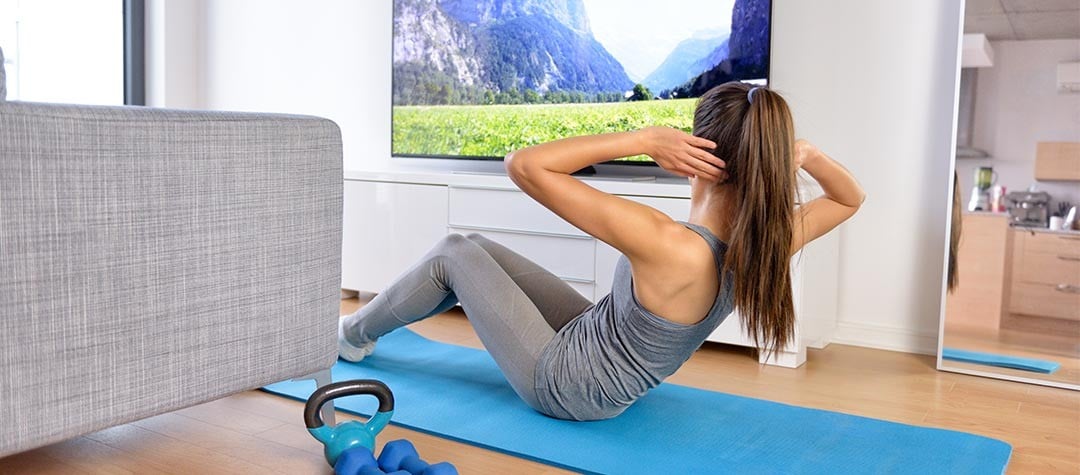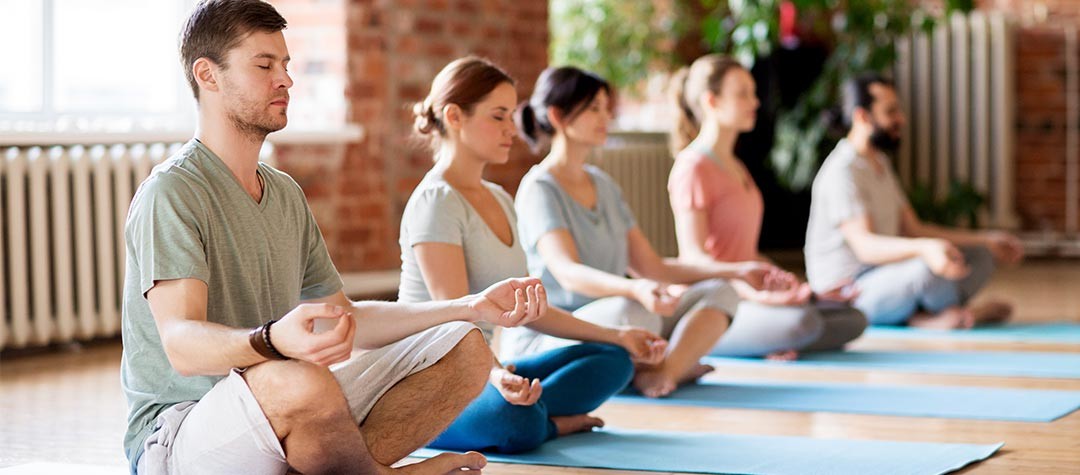Suffer from stiff or sore muscles? Want to be able to drop down into the splits or even just limber up and prevent injuries before a workout? Read these flexibility FAQs and find out all you need to know about stretching.
When is the prime time to stretch during my workout?
Ideally, the best time to stretch is after your have finished an exercise session, as your heart rate will be raised. Your muscles and joints are also warm from the exercise and therefore stretching will be easier, as muscles are more pliable when their temperature is raised. You should also incorporate dynamic stretching into your warm-up routine, after you have completed a 10 minute jog to raise your heart rate. This type of stretching increases your range of motion. For example slowly jogging with high knees or completing heel flicks at a slow pace will help to loosen your muscles before the workout begins.
How often should I stretch to see an increase in my flexibility?
If you want to improve your flexibility then the more you stretch, the more flexible you will become. If you stretch for as little as 10 minutes a day you should see an improvement in your range of movement. Frequent, shorter stretching periods are more useful than longer sessions. It is also important to remember the saying ‘if you don’t use it, you lose it’ in relation to flexibility. Once you have gained the degree of flexibility you are aiming for, you should continue to stretch to maintain your range of movement. It is also important to remember the recommended length you should hold a stretch in position for is 15-30 seconds.
I don’t need to be flexible for my sport, so why should I bother with stretching or flexibility training?
Although you may think this is the case, flexibility is actually a vital component of any workout. Flexibility is often referred to as ‘the third pillar of exercise’ but is commonly the most neglected area of fitness. Stretching aids your circulation and can also increase blood flow to your muscles - reducing muscle fatigue and soreness. Flexibility is also essential in everyday life as well as in sport; it helps to prevent muscle and tissue injuries and improves your posture . Studies have also found that flexibility helps your body reach its optimum fitness levels, so it is not a component of fitness that should be ignored!
As somebody who has not done a lot of stretching before, how do I go about introducing flexibility training into my workout routines?
You can quite easily set aside 10 or 15 minutes after your workout and begin to introduce flexibility training.
A simple stretching routine after exercise will improve your levels of flexibility, and once you have completed the sequence a few times the routine will become second nature to you. The main areas to focus on are the: hips, quadriceps, hamstrings, calves and chest. You should static stretch each of these muscles by holding a position that is comfortable to you, until you feel a gentle pull on your muscle. Hold this stretch for 10-15 seconds and then slowly, gently release the stretch.
My primary aim is to increase my strength; surely I don’t need to waste time and effort on flexibility in my gym sessions?
If you don’t stretch, it hinders your ability to build muscle so strength and flexibility training should both be vital parts of your workouts as the two go hand in hand. Through stretching a muscle, your tendons and muscle fibres elongate. Therefore if the muscle fibres are longer, there is effectively a bigger surface area in which to increase the size of your muscle through strength training. Introduce some static stretching to your workout after you have completed weight training. This will both enhance muscular development and also prevent post-exercise soreness and muscle fatigue.
Should I stretch an injured muscle?
It really depends how severe your muscle injury is. After initially treating the identified injury using the PRICE technique (Protection, Rest, Ice, Compression, Elevation), you should rest and wait at least 2-4 days to assess the severity of the strain. For example, if the injury is a hamstring strain, you should only proceed further with the recovery stages when walking and other daily activities are pain free. You could then start to complete some light stretches on the muscle. However if pain with the injured muscle persists after a week or two, then you should seek advice from a professional.
What is PNF stretching and how can I do this technique?
PNF stands for Proprioceptive Neuromuscular Facilitation. It is widely known as one of the best training techniques to improve your range of motion as it engages the stretch reflex. PNF combines both isometric and passive stretching and there are typically two stages to the technique, namely ‘hold-relax’ and ‘contract-relax’. It is more effective if you complete each stage with a partner. To carry out the PNF technique, you stretch the muscle to your maximum flexibility level and hold for around 10 seconds; then contract the muscle. This stage is then repeated and you should end the process by being able to stretch the limb further than your previous maximum flexibility level.
What is the stretch reflex?
The stretch reflex (often referred to as the myotatic reflex) is a vital part of the body’s response to a muscle contracting. Once a stretch is engaged, the muscle spindle (inside the muscle) stretches too. The muscle spindles try to prevent an injury in the muscle. The spindles note the change in length of the muscle and the speed of the change, then send an impulse to the spinal cord. This process then triggers the stretch reflex. Initially, the stretch reflex will oppose the change by causing a contraction in the stretched muscle. Therefore by holding the stretch for 15 seconds, it allows the muscle spindle to adapt and allow the muscle to lengthen, therefore leading to an increase in your range of motion and flexibility.
Is there such a thing as overstretching?
Yes there is such a thing as overstretching. Some of the tell tale signs that you have overstretched are muscle tears, muscle swelling and a decrease in your overall athletic performance. However, there are steps that you can take to prevent overstretching occurring. For example, you should never stretch a cold muscle, as this makes the muscle more susceptible to injuries. You should also never hold a stretch for longer than 30 seconds. Finally always remember to listen to your body when stretching and stay within your comfort zone. There is no point in expecting to touch your toes, or do the splits after your first stretch!
How important are the correct breathing techniques in flexibility training?
Breathing correctly is a key element in flexibility training. As with yoga practice, focusing on your breathing technique ensures your body and muscles are relaxed and allows you to take in more oxygen to feed your muscles. Breathing also calms your nervous system and deep, slow breathing helps muscles recover after exercise by assisting in removing the build-up of lactic acid. It is common for people to hold their breath when stretching a muscle, however this can hinder your performance of a stretch as you are denying your muscles oxygen. During a cool-down stretching session , you should focus on breathing in through your nose and out through your mouth to ensure your lungs make full use of the oxygen.

